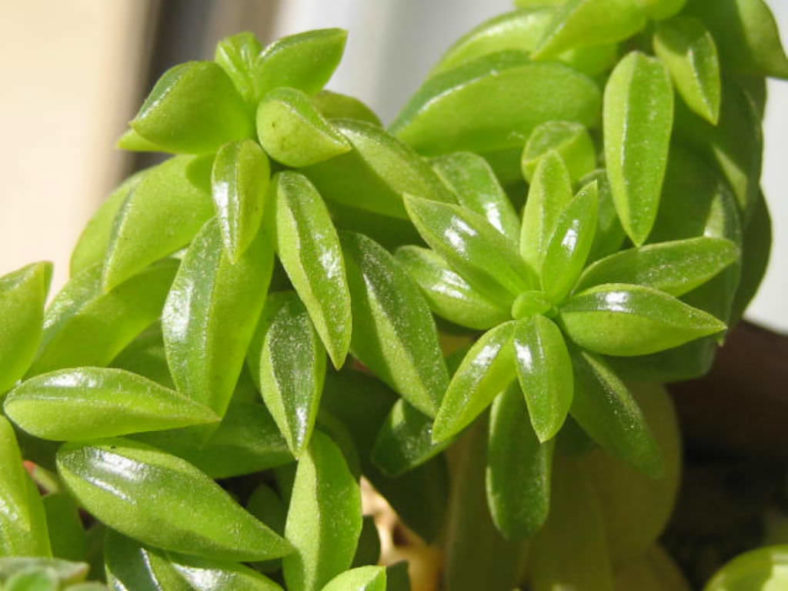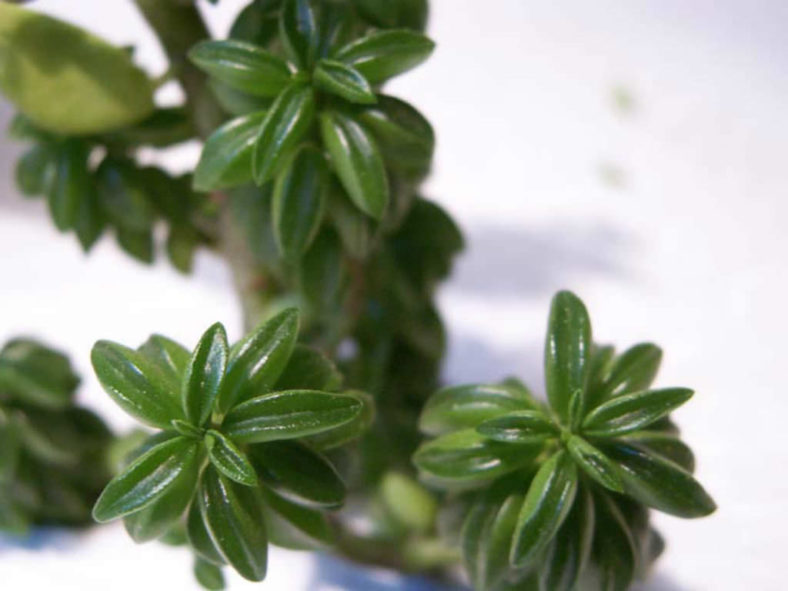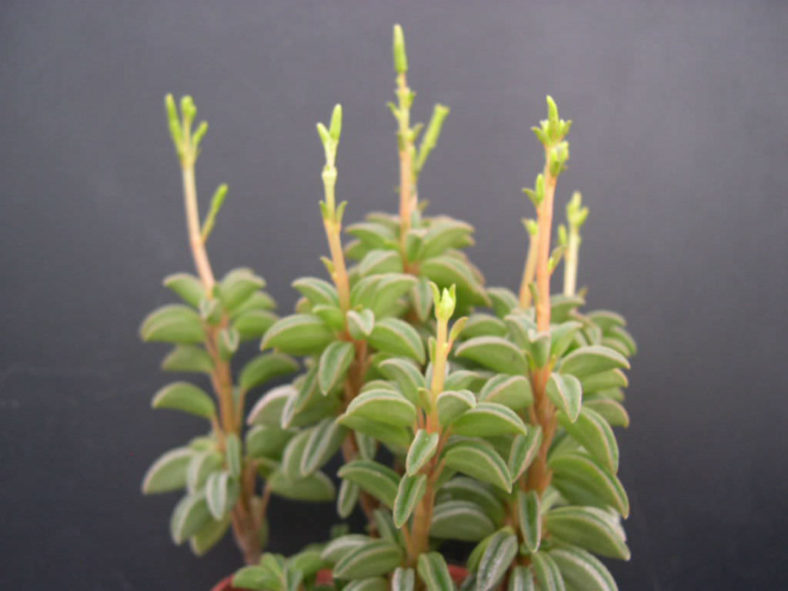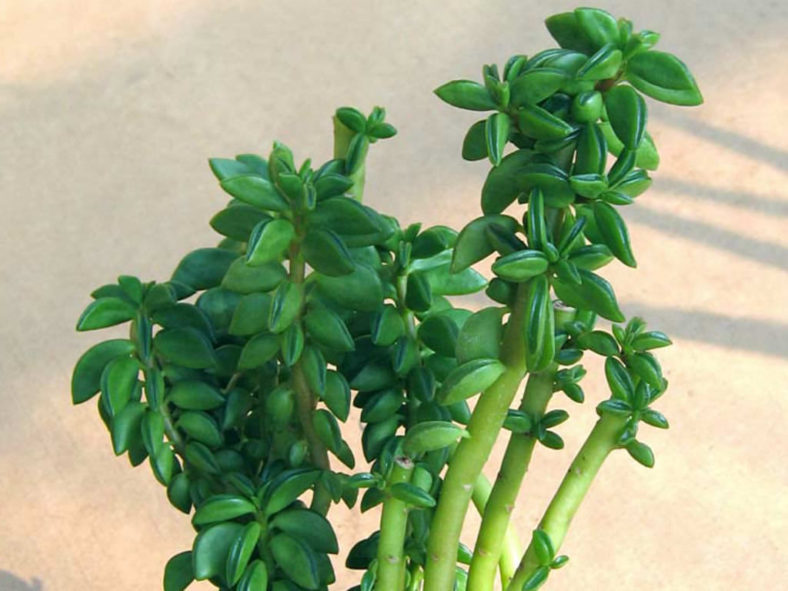Scientific Name
Peperomia nivalis Miq.
Synonym(s)
Peperomia nivalis var. nivalis
Scientific Classification
Family: Piperaceae
Genus: Peperomia
Etymology
The specific epithet "nivalis" (pronounced "niv-VAL-iss") means "snowy, snow-covered" and likely refers to the white dust that this species develops on its lime green leaves during cooler months.
Origin
Peperomia nivalis is native to Peru. It occurs in the high-altitude ranges of the Peruvian Andes.
Description
Peperomia nivalis is а cute succulent with upright or prostrate stems that bear lime green, boat-shaped leaves with a dark green epidermal window on the top. The fleshy stems can grow up to 6 inches (15 cm) long. The leaves are thick, succulent, and U-shaped in cross-section. They develop a white dust and a pink blush in the cooler months.
Yellow spikes of many tiny, yellow flowers sprout from the tips of the stems in summer.

Hardiness
USDA hardiness zones 10a to 11b: from 30°F (-1.1°C) to 50°F (10°C).
How to Grow and Care
Peperomias are not particularly hard plants to grow, and their small size and delicate leaves make them perfect for desktops and dish gardens. They will rarely overtake their neighbors or shade them out. In short, they are perfectly mannered and attractive little plants.
The biggest problem facing Peperomias is usually related to watering. They like steadily moist soil but can be very sensitive to overwatering. Overwatered Peperomias tend to wilt (paradoxically) or have raised scab-like protrusions on their leaves. Do not be alarmed if your plant loses a few bottom leaves, but a massive leaf drop is usually due to a temperature change or a fertilizer problem. Lastly, Peperomias are susceptible to mealybugs, so watch for cottony white masses on leaves' stems or undersides.
Peperomia thrives when slightly pot-bound, so don't overpot them. Repot plants in spring, especially to refresh the existing soil, but place them back into the same size container after root-pruning or go up to only one pot size. The largest Peperomias remain relatively small and will never grow into large specimen plants.
See more at How to Grow and Care for Peperomia.
Links
- Back to genus Peperomia
- Succupedia: Browse succulents by Scientific Name, Common Name, Genus, Family, USDA Hardiness Zone, Origin, or cacti by Genus
Photo Gallery
Click on a photo to see a larger version.


